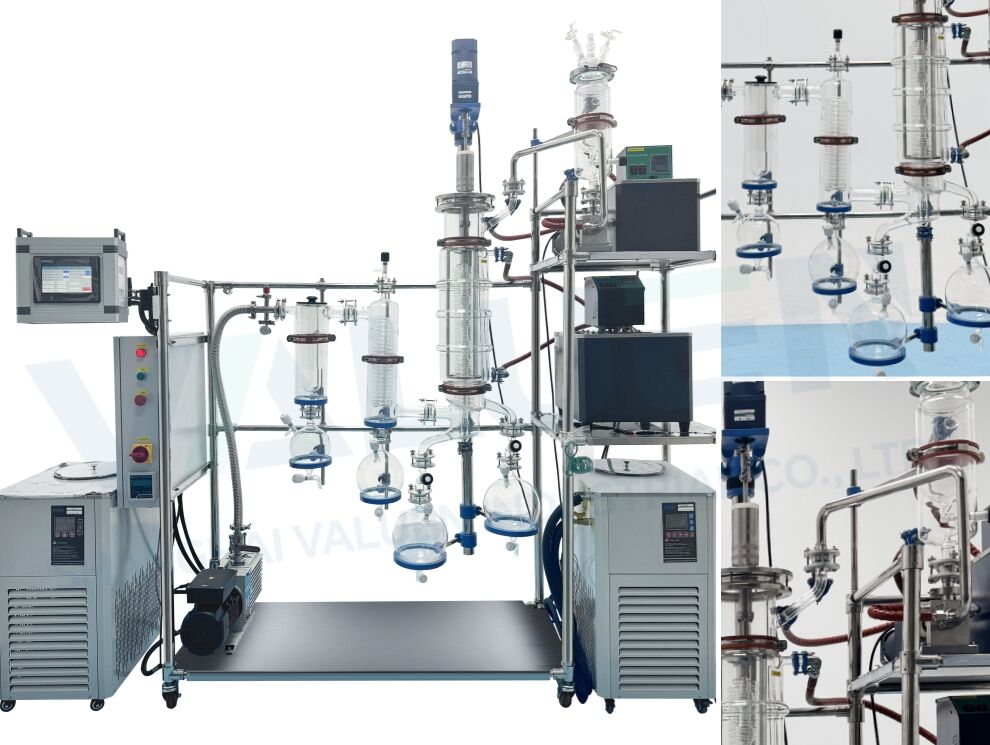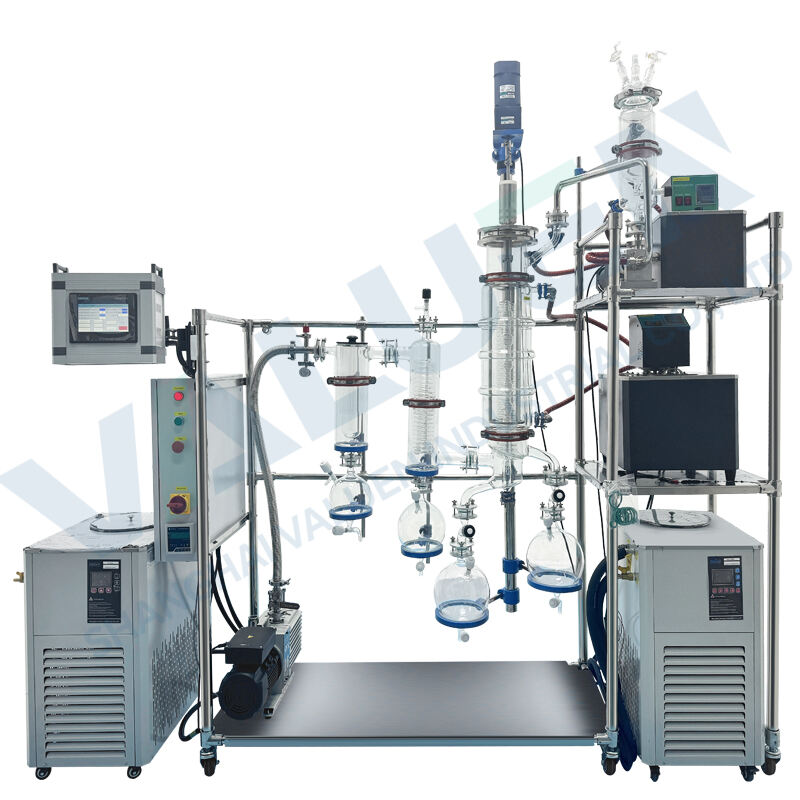Understanding the Fundamentals of Molecular Distillation Equipment
Molecular distillation represents a sophisticated separation process essential in various industries, from pharmaceutical manufacturing to food processing. The choice between glass and stainless steel molecular distillation systems significantly impacts operational efficiency, product quality, and overall investment returns. This comprehensive guide explores the key differences, advantages, and considerations for both materials in molecular distillation equipment.
Material Properties and Performance Characteristics
Thermal Conductivity and Heat Distribution
Glass molecular distillation systems offer exceptional thermal properties that make them particularly suitable for heat-sensitive compounds. The borosilicate glass used in these systems provides uniform heat distribution, preventing hot spots that could potentially degrade sensitive materials. The transparency of glass also allows operators to visually monitor the distillation process, making it easier to identify and address any issues immediately.
In contrast, stainless steel molecular distillation systems exhibit superior thermal conductivity, enabling faster heating and cooling cycles. This enhanced heat transfer capability can significantly improve production efficiency, particularly in high-volume operations. However, the opaque nature of stainless steel means operators must rely entirely on instrumental readings to monitor the process.
Chemical Resistance and Durability
Glass molecular distillation systems demonstrate remarkable resistance to a wide range of chemicals, making them ideal for processing corrosive substances. The non-reactive nature of borosilicate glass ensures product purity by preventing any potential contamination from material leaching. However, glass systems require careful handling due to their inherent fragility.
Stainless steel systems, particularly those constructed with high-grade 316L steel, offer exceptional durability and resistance to mechanical stress. They can withstand higher operating pressures and are less susceptible to damage from physical impacts. This robustness makes them particularly suitable for industrial-scale operations where equipment longevity is crucial.

Operational Considerations and Efficiency
Maintenance Requirements and Cleaning Protocols
Glass molecular distillation systems typically require more frequent inspection and careful maintenance to ensure their integrity. The transparency of glass facilitates easy cleaning validation, as operators can visually confirm the cleanliness of surfaces. However, cleaning procedures must be executed with precision to avoid damaging the glass components.
Stainless steel systems generally demand less frequent maintenance and can withstand more aggressive cleaning protocols. Their robust construction allows for the use of mechanical cleaning methods and stronger cleaning agents. However, the inability to visually inspect internal surfaces means more sophisticated cleaning validation procedures may be necessary.
Processing Capacity and Scalability
Glass molecular distillation systems are often preferred for smaller-scale operations and research applications where precise control and observation of the process are paramount. Their limitations in terms of size and pressure handling capacity can restrict their use in large-scale industrial applications.
Stainless steel systems excel in high-volume production environments, offering greater scalability and the ability to handle larger batch sizes. Their superior pressure resistance allows for more aggressive operating conditions, potentially improving throughput and efficiency in industrial settings.
Cost Analysis and Return on Investment
Initial Investment Considerations
Glass molecular distillation systems typically represent a lower initial investment compared to their stainless steel counterparts. The manufacturing process for glass equipment is generally less complex, resulting in more competitive pricing. However, the total cost of ownership must consider factors beyond the initial purchase price.
Stainless steel systems often command higher upfront costs due to material expenses and more complex fabrication requirements. The investment in a stainless steel system may be justified by its longer service life and ability to handle more demanding operating conditions.
Long-term Economic Impact
When evaluating long-term economics, glass systems may require more frequent replacement of components and generally have higher insurance costs due to their fragility. However, their excellent chemical resistance can mean lower maintenance costs in applications involving corrosive materials.
Stainless steel systems typically offer lower operating costs over time due to their durability and reduced maintenance requirements. The ability to handle larger volumes and operate under more aggressive conditions can lead to higher productivity and better return on investment in industrial applications.
Frequently Asked Questions
What are the primary advantages of glass molecular distillation systems?
Glass molecular distillation systems offer superior chemical resistance, excellent visibility of the process, uniform heat distribution, and are particularly suitable for heat-sensitive compounds. They also typically require a lower initial investment and are ideal for research and development applications.
How does the maintenance differ between glass and stainless steel systems?
Glass systems require more careful handling and frequent inspection but offer easier cleaning validation due to their transparency. Stainless steel systems are more robust and can withstand aggressive cleaning methods but may require more sophisticated validation procedures due to their opaque nature.
Which system is better for large-scale industrial operations?
Stainless steel molecular distillation systems are generally better suited for large-scale industrial operations due to their superior durability, higher pressure handling capability, and greater scalability. They can handle larger batch sizes and more aggressive operating conditions, making them ideal for high-volume production environments.

